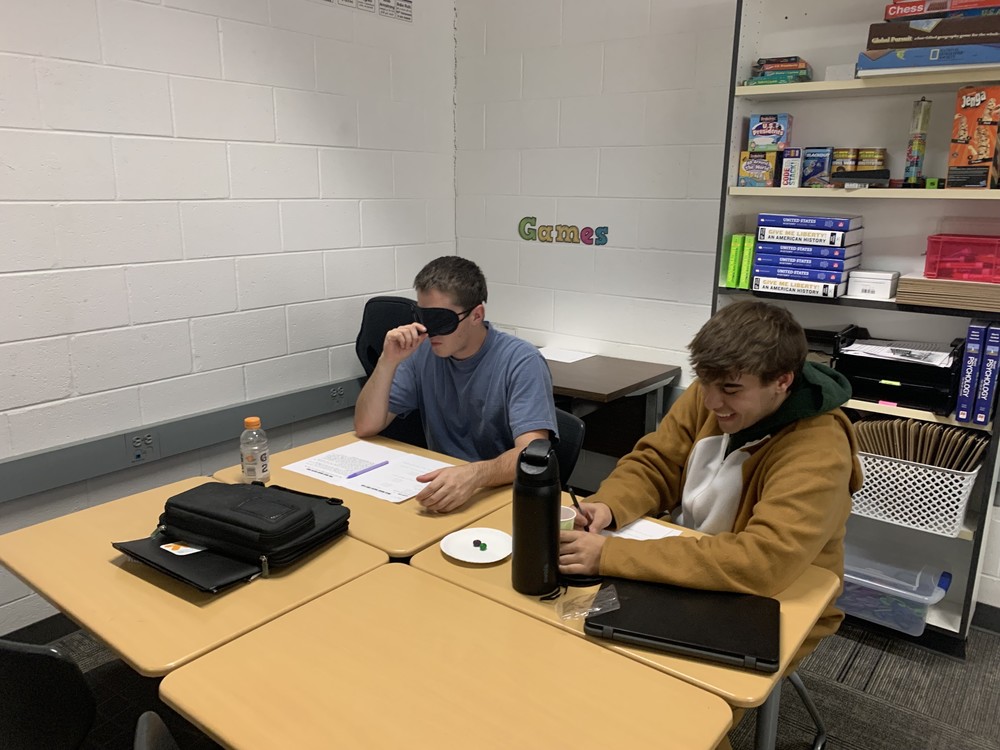In Sara Wells’ AP Psychology class, students recently took part in a fun and flavorful experiment designed to explore the connection between taste and smell. Wearing blindfolds and sampling colorful jelly beans, students were challenged to determine how their senses interacted to influence perception. “We’re tasting and smelling jelly beans in AP Psychology,” said Wells. “Why? To understand how those senses are connected.”
The activity prompted students to question their assumptions about sensory processing. As they plugged their noses, tasted different flavors, and recorded their reactions, they discovered how much smell contributes to the experience of taste. Wells explained, “Can you taste a flavor better with your nose plugged or open? Is your sense of smell stronger than your sense of taste? How strong does a taste have to be for you to sense it?”
After the hands-on portion, students analyzed the data they collected, compared results among groups, and reflected on how their experiences aligned with classroom learning about the human sensory system. By blending scientific curiosity with a little bit of sweetness, Wells’ class turned theory into a memorable and engaging sensory experiment.

